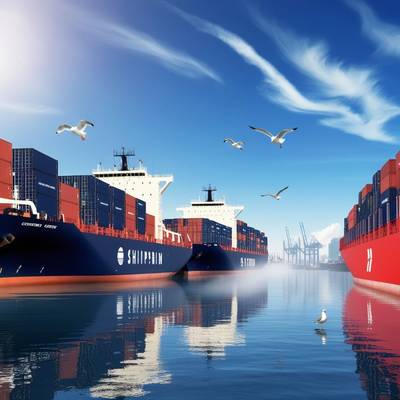Container Ships Maritime Vessels - The Backbone of International Trade
Container ships are vessels designed specifically to transport standardized containers. Container ships have revolutionized shipping, making it more cost-effective and efficient to transport goods across oceans.
History and Evolution
Malcom McLean, an American entrepreneur, introduced the concept of containerized shipping in the middle of 20th century. Prior to the advent of containerization cargo was handled manually through a process called break-bulk. This method was time-consuming and labor-intensive. It also posed a risk of damage and theft. Containers that could be loaded, unloaded and stacked easily, as well as transported, marked a major shift in the maritime logistics industry.
In 1956, the ideal X, which carried 58 containers, made its way from Newark, New Jersey, to Houston, Texas. The advent of container ships marked a new age in shipping. Container ships have increased in size and capacity over the years, with some modern vessels capable to carry more than 20,000 TEUs.
Design and Features
Container ships have a flat deck with a large cargo area that is open and where the containers are stacked. The key features are:
- Capacity : Container ships are measured in TEUs. They range from small feeders that have a capacity of only a few hundred to ultra-large containers vessels (ULCVs), which can carry more than 20,000 TEUs.
- Efficiency Modern container ships have advanced propulsion systems, hull designs and other features that improve fuel efficiency and reduce emissions.
- Safety : Twist-locks are sophisticated locking mechanisms that secure containers, keeping them stable during transit. Container ships are also built to withstand rough seas and harsh weather conditions.
- Automation Many container ships use automated systems for navigation and monitoring as well as cargo handling to improve operational efficiency and safety.
Types of container ships
- Feeder Ships Small vessels that collect containers and distribute them to and from larger ports.
- Panamax Ships. These vessels are named after their ability navigate through the Panama Canal. They have different capacities and dimensions.
- Neo-Panamax Ships: These ships are designed to pass through an expanded Panama Canal. They have a greater capacity.
- Ultra Large Container Vessels: the largest container ships used on major trade routes around the world.
Global Trade: Importance
Container ships are crucial to the global economy. Container ships allow for the efficient transport of goods over vast distances and connect manufacturers and consumers all around the globe. It has helped to grow international trade by allowing a variety of products to be shipped at low cost, including electronics, machinery, food, and clothing.
Standardized containers streamline the logistics process by reducing the handling time and the risk of damage. The result has been significant cost savings, and an increased level of reliability within the supply chain. This is beneficial to both businesses and consumers.
Environmental Considerations
Shipping industry's environmental impact is increasingly being scrutinized. Container ships, especially the largest, are major sources of greenhouse gases. The industry has responded by investing in cleaner technologies such as:
- LNG Propulsion Reduces emissions of nitrogen oxides, sulfur oxides and carbon dioxide.
- Advanced Hull Design: Minimizing the water resistance to increase fuel efficiency.
- Exhaust Gas Cleaning Systems: Reduce harmful emissions from ship exhaust.
There is also a push to develop zero-emission ships powered by alternative fuels like hydrogen and ammonia as well as wind-assisted technology.
Container ships have revolutionized the shipping industry and made global trade more accessible. The shipping industry is challenged to balance efficiency and environmental sustainability as the demand for international transportation continues to increase. Container ships will remain an important part of the global trade in years to come, thanks to ongoing technological advancements and a commitment towards reducing emissions.



















